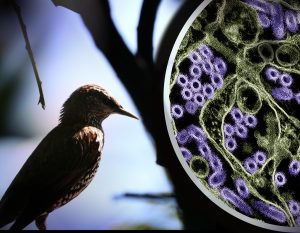As of January 2025, eggs—one of the most common food items and protein sources—have become increasingly scarce, and when available, they come at a steep price. This lack and high expense of eggs correlates with an ongoing bird flu outbreak.
According to the Centers for Disease Control and Prevention (CDC), bird flu is a disease caused by avian influenza A viruses that typically spreads between birds, not people. One subtype of bird flu, caused by the avian influenza A (H5) virus, is spreading worldwide in wild birds and causing sporadic outbreaks in U.S. poultry and dairy cows. Although the current public health risk is low for H5 bird flu, the CDC will continue to carefully monitor the situation.
The avian bird flu has resulted in soaring egg prices, creating financial strain for many households. According to the Bureau of Labor Statistics, the average price for a dozen eggs in March of 2020 was $1.89. Now, as of January 2025, they cost $5.95 in most U.S. cities. However, that is solely the nationwide average. In some places, a carton of eggs has skyrocketed to $10 or more per dozen. An anatomy and sports exercise teacher at WMC, Mrs. Pickrell, says, “I usually get them [eggs] at Trader Joe’s because I like the quality of the eggs there, and they’d gone from like $3.99 a box to $6.99 a dozen, which is almost twice the price, which is alarming.” This sharp increase in egg prices has impacted millions of Americans, especially those of low-income families. With Easter just around the corner, egg prices will continue to spike due to high holiday demand.

As of March 2025, the CDC has documented cases of avian bird flu in every U.S. state as well as the territory of Puerto Rico. 678 countries have been affected, with 1,667 reported outbreaks. About 67 human cases have been reported, and 1 death. This 2025 spike in egg prices is the biggest since the nation’s last bird flu outbreak in 2015 and has accounted for roughly two-thirds of the total increase in recent food costs, according to the U.S. Bureau of Labor Statistics.
According to the American Veterinary Medical Association, scientists have identified the emergence of a new genotype, the D1.1, which has spread across all of North America’s four migratory waterfowl flyways. The D1.1 genotype refers to a highly dangerous strain of the H5N1 avian influenza virus bird flu. The arrival of this genotype could signify an unfavorable turning point in the recent H5N1 outbreak.
Despite this, hope prevails because the majority of bird flu outbreaks since 1959 have been addressed by developing disease surveillance, vaccines, and biosecurity. Ongoing scientific progress and agricultural policies provide hope that egg prices will eventually stabilize. Mrs. Hallett is a History and Social Sciences teacher at WMC who frequently buys eggs for her two young children. Hallett makes a new point, explaining, “If there’s a lack of eggs because of the bird flu, then there’s nothing the government or anyone can do. But if it’s because of, you know, trading policies, then I think more care might be needed to make sure that markets stay more stable and not have such extreme changes.” Hallett’s perspective highlights the delicate balance between natural disease outbreaks and human-driven economic factors in determining the amount of eggs distributed and their prices.
While the current bird flu outbreak has produced significant challenges for both the agricultural industry and consumers, efforts to control the virus and stabilize the market remain ongoing. Farmers, policymakers, researchers, and scientists continue to work together toward solutions that will alleviate the impact of future outbreaks or viruses and maintain price stability. Until then, consumers have to navigate the changes. Whether through improved biosecurity measures or tactical market interventions, the goal continues to stay clear: ensuring a stable and accessible egg supply for all.
































